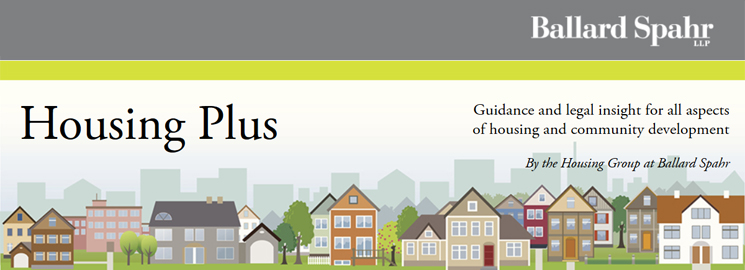
The Office of Management and Budget (“OMB”) released the Trump administration’s budget blueprint today, providing a general overview of the budget request it intends to present to Congress later this Spring. As outlined, the blueprint calls for a 13.2% reduction through cutting over $6 billion in funding to the U.S. Department of Housing and Urban Development (“HUD”).
The blueprint describes elements that together comprise reductions to HUD programs realized, in part, by eliminating the following programs:
-
the Community Development Block Grant (“CDBG”) program ($3 billion);
-
the HOME Investment Partnerships Program (“HOME”), Choice Neighborhood Initiative, and Self-help Homeownership Opportunity Program (combined $1.1 billion reduction);
-
Section 4 Capacity Building for Community Development and Affordable Housing ($35 million).
These cuts account for over $4 billion of the total $6 billion. The remaining cuts are likely to be drawn, in part, from the public housing capital and operating funds as suggested by the leaked budget proposals obtained by The Washington Post last week.
The blueprint also proposes the elimination of the independent Neighborhood Reinvestment Corporation and U.S. Interagency Council on Homelessness, as well as the elimination of the Community Development Financial Institutions Fund within the U.S. Treasury Department.
The OMB blueprint with regard to HUD states, “[t]he Budget also recognizes a greater role for State and local governments and the private sector to address community and economic development needs.” What is missing from this statement is that CDBG and HOME funds are disbursed through States and local governments. Without these funds, the ability of State and local governments to meet the pressing needs of their communities are significantly hindered.
Keep in mind that the main budgetary piece of business before Congress will be (1) extending the continuing resolution of the FY 2017 budget set to expire April 28, 2017 or (2) finalizing adoption of a Transportation, HUD FY17 appropriations bill. The proposals in the budget blueprint will not come before Congress before then.
And, when Congress does consider an appropriations bill, it may initially consider the OMB budget blueprint, but the budget that will evolve through the Congressional process can look very different from the OMB proposals. Constituents have an opportunity to advocate to their Senators and Representatives the value of these programs for the people in their communities and the contributions these programs make to the economy. At the end of the day, the final appropriations bill set out in the conference report developed by the House and Senate requires adoption by both chambers, with the Senate required to adopt it by three-fifths (or 60 votes), highlighting the need for bipartisan support.